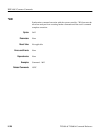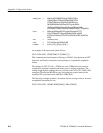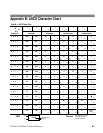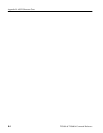
Appendix A: Expression Syntax
A–2
TVS600 & TVS600A Command Reference
<meas_func> ::= AAMList|AC|ACRMS|AMPLitude|AREA|DC|DELay
|CARea|CMEan|COPulse|CPARea|CRMS|CROss
||FTIMe|FREQuency|GAIN|HIGH|LOW|MAXimum
|MEAN|MID|MINimum|NCRoss|NDUTycycle|NWIDth
|OVERshoot|PARea|PCRoss|PDUTycycle|PERiod|PHASe
|PREShoot|PTPeak|PWIDth|RMS|RTIMe|SDEViation|TTRig|WMList
<func> ::= ABSolute|AVERage|BAT|DERivative|ENVelope|EVT|FFT|
FILTer|FORMat|HLT|INTegral|SEGMent|SMOothing|SRQ|
STATistics|TRANsform|TRG|VECTor|XDURation|XOFFset|XSCale|
XSIZe
<nrx> ::= <number>{<unit>}
<unit> ::= PCT|XUnit|Second|PS|NS|US|MS
<number> ::= [0–9]...{.[0–9]...}{[E|e]{+|–}[0–9]...}
An example of the expression syntax follows:
CALC1:PATH:EXPR (FORM(TRAN(FILT(CHAN1))))
This command performs frequency filtering on CHAN1, then performs an FFT
transform, and finally formats the result, perhaps in a logarithmic magnitude
format.
The settings for CALC:FILTer, :TRANsform, and :FORMat functions must be
completed in separate command statements prior to starting acquisition. The
settings might include enabling the low-pass filter with CALC:FILT:FREQ:LPAS,
setting the TRANsform WINDow type, and setting the result format for the
resulting FFT waveform record with CALC:FORM MLOG.
The following example produces a waveform with an average value of zero and
an amplitude normalized to one:
CALC2:PATH:EXPR ((CHAN1-MEAN(CHAN1))/AMPL(CHAN1))


















